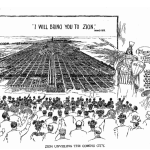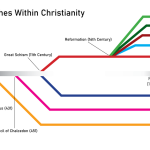Paul appears to be describing the death, burial, and resurrection of Jesus in Colossians 2:11-12. The “stripping of the body of the flesh by the circumcision of Christ” refers to the crucifixion of Jesus, which fulfills what the rite of circumcision symbolized – the removal of flesh.
What is this “flesh” removed in the circumcision of Jesus? I think it refers to the dress, symbols, markings, and other ceremonies and cultural boundaries that characterized ancient peoples, along with the attitudes that these markings and symbols expressed and reinforced. Stripping the flesh means stripping away the whole way of life of ancient, and tribal, humanity.
Two implications:
One, Israel already aimed at this stripping of the flesh, this “voiding of the tribe,” in circumcision, a rite of flesh-removal rather than flesh-enhancement. Paradoxically, the Jews turned this confession about the impotence of flesh into just another tribal mark.
Second, it might seem overstated to suggest that it took the death of the incarnate Son of God to strip tribal man of his flesh and its markings. But that seems overstated only if one forgets what ancient culture, and tribal life, is all about. The markings were the man; a man wearing the mark of his totem is identified with that totem, with the animal that is the tribe’s symbol and aspiration. A member of the eagle clan is marked with the eagle tattoo and becomes the eagle. Stripping his flesh means stripping his identity, and giving him a new one. Stripping flesh is nothing less than new birth.










